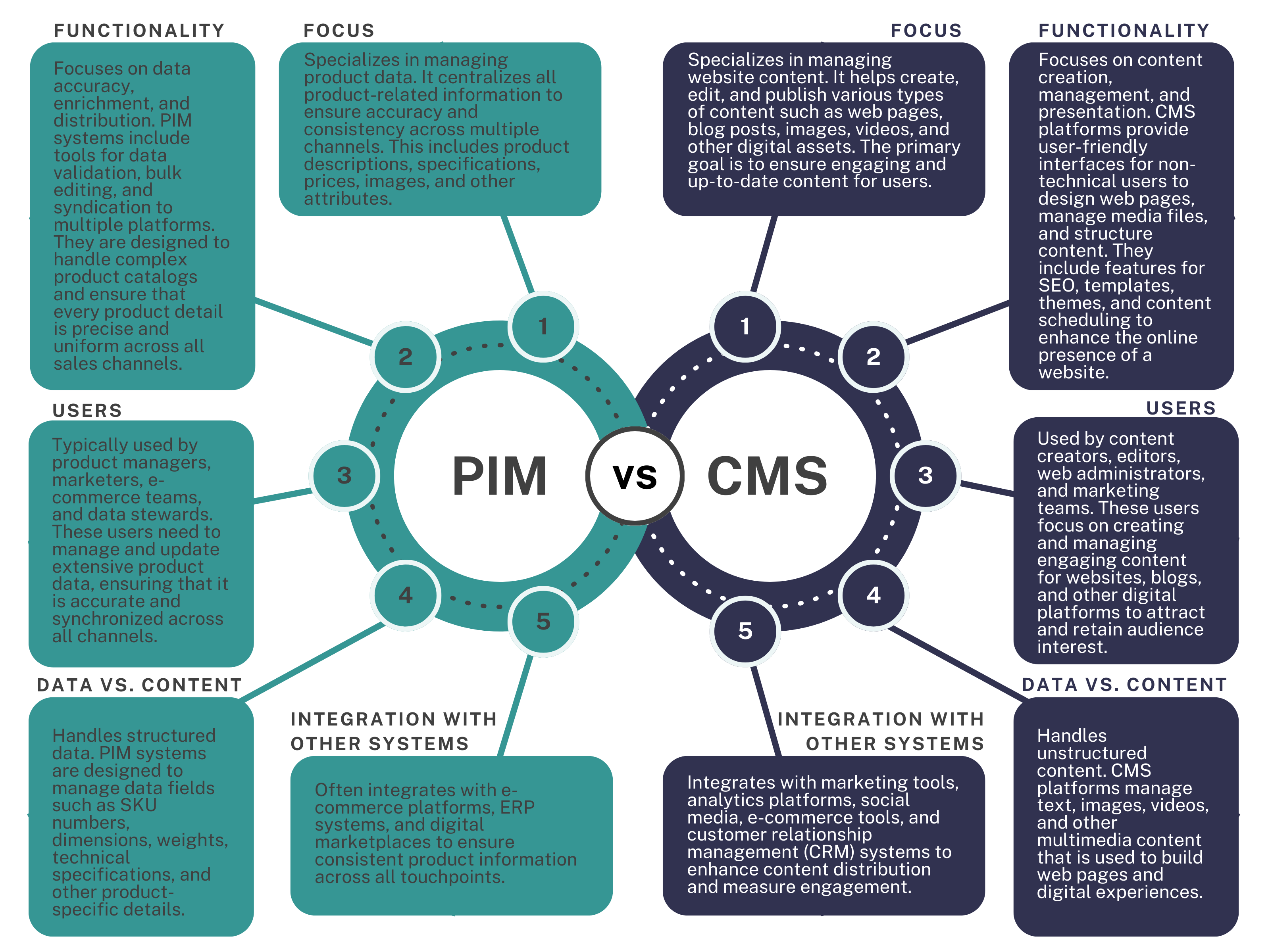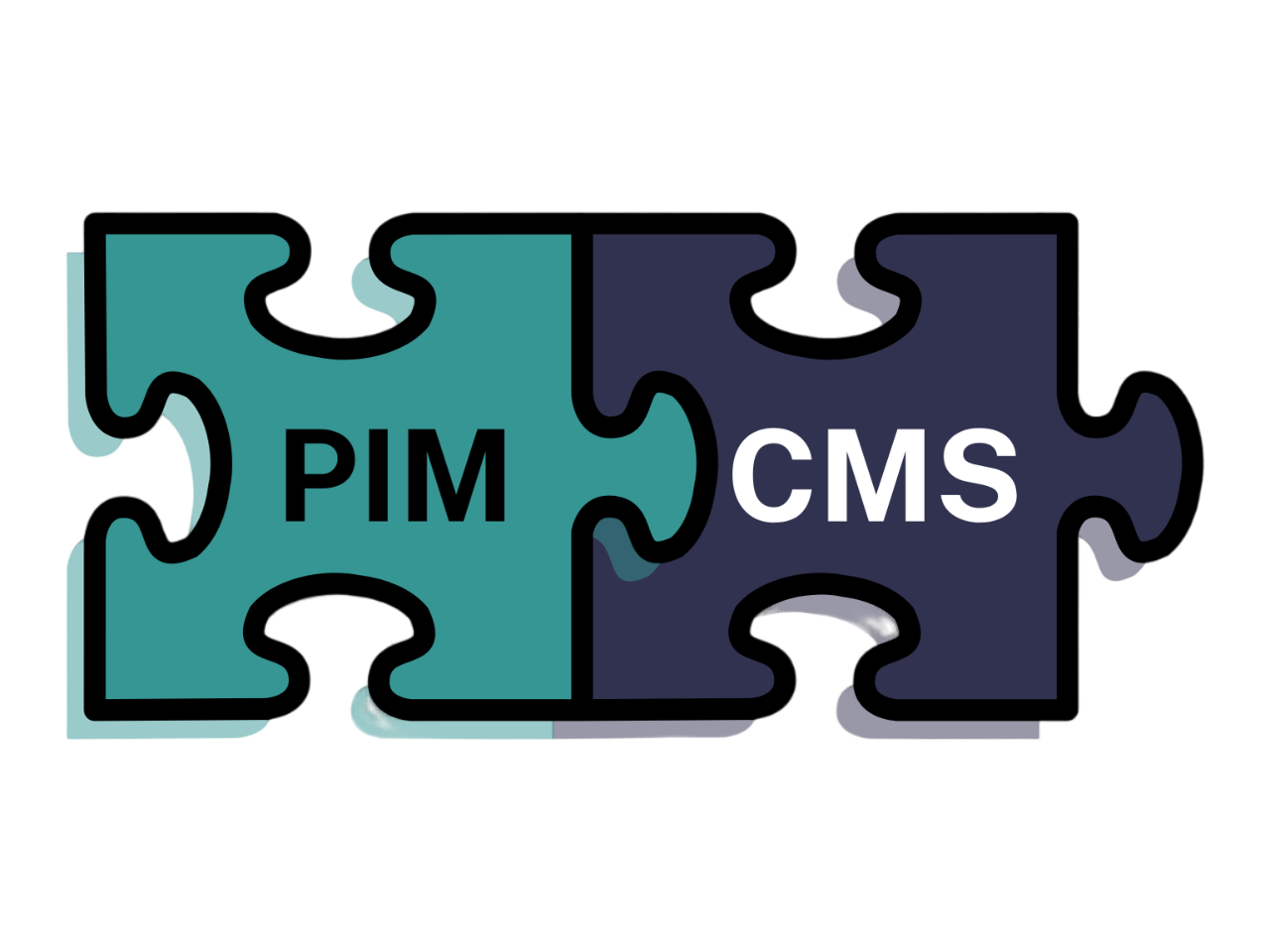What is PIM?
Product Information Management (PIM) systems are specialized tools designed to manage and centralize product data. Businesses use PIM to collect, maintain, and distribute product information efficiently. PIM handles product descriptions, specifications, sometimes also prices, and images. Key features of a PIM system include:
- Data Centralization: PIM centralizes all product-related information, ensuring a single source of truth.
- Data Enrichment: Enhances product data with detailed descriptions, specifications, images, and other attributes.
- Channel Management: Distributes consistent product information across various sales channels such as e-commerce platforms, marketplaces, and print catalogs.
- Data Quality Management: Ensures data accuracy, completeness, and consistency through validation rules and workflows.
PIM is crucial for businesses with large product catalogs, diverse sales channels, frequent product updates, or multiple languages. It helps maintain high-quality, consistent product data across all customer touchpoints.
What is CMS?
A Content Management System (CMS) is a software application that allows users to create, manage, and publish digital content. CMS platforms help users create, edit, and maintain websites without needing technical knowledge. They manage text, images, videos, and other digital assets. Key features of a CMS include:
- Content Creation: Enables users to create and edit web pages, blog posts, and other digital content using a user-friendly interface.
- Media Management: Stores and organizes images, videos, and documents. Also sometimes it is organized in a separate digital asset management (DAM) solution.
- Templates and Themes: Provides design templates to maintain a consistent look and feel across the website.
- Publishing Workflows: Facilitates content approval processes and scheduling.
- SEO Tools: Includes features to optimize content for search engines.
CMS platforms, such as WordPress, Joomla, and Drupal, empower users to maintain websites without needing deep technical skills. They are essential for managing online content, improving user engagement, and ensuring timely updates.
Differences Between PIM and CMS
To start, we need to say that PIM and CMS serve different purposes. PIM focuses on product data management and CMS in turn focuses on website content management. Therefore they serve distinct but complementary roles.

While PIM and CMS have different core functions, integrating them can enhance overall business efficiency and customer experience.
Opportunities of Combining PIM and CMS
Integrating PIM and CMS creates a seamless flow of information and content. First, the PIM automatically syncs product information to the CMS. Thus, updates in product data instantly reflect on the website. Also, accurate product information from the PIM combines with engaging content in the CMS. This results in rich product pages. Centralizing product data in the PIM allows efficient content management. Meanwhile, the CMS focuses on content creation and presentation.
Combining PIM and CMS offers numerous benefits. It ensures accurate product details on all sales channels. This builds customer trust. Additionally, detailed product information from the PIM and engaging content from the CMS enhance user experience. They create a richer, more informative shopping experience. Furthermore, this integration reduces the need for manual data entry. It frees up time for strategic activities. Also, it improves SEO. Detailed product descriptions and enriched content help improve search engine rankings. This drives more organic traffic to the website. Moreover, the combined system handles increased data volume and complexity. This ensures scalability as product lines expand. Additionally, for multi-lingual sites, a good CMS can manage different languages in combination with multi-lingual product descriptions in a PIM solution. This ensures consistent and localized customer experience across all channels. Customers enjoy the same experience online, on mobile apps, or in physical stores.
Several companies offer integrated PIM and CMS solutions. For example, Crystallize provides fast product information management with a headless CMS. DynamicWeb combines PIM, CMS, and eCommerce in one platform. AtroPIM offers open-source PIM with flexible data models. Bettercommerce integrates PIM and CMS for seamless eCommerce management. Censhare delivers powerful PIM with advanced asset management capabilities. Pimcore offers a comprehensive platform for PIM, CMS, and digital asset management. These platforms enable businesses to manage product information and content seamlessly. Consequently, they enhance operational efficiency and improve customer experience across various channels.

Summary
Combining PIM and CMS systems is essential for businesses looking to streamline their operations and enhance customer experiences. PIM and CMS systems serve different but complementary roles in managing product information and digital content. Integrating these systems can lead to consistent product data, enhanced user experiences, and improved operational efficiency. This integration supports a scalable, omnichannel strategy that meets the demands of modern businesses and their customers.
Join our newsletter
Be the first to know about Product Information Management news, helpful tips, and updates!
Join

